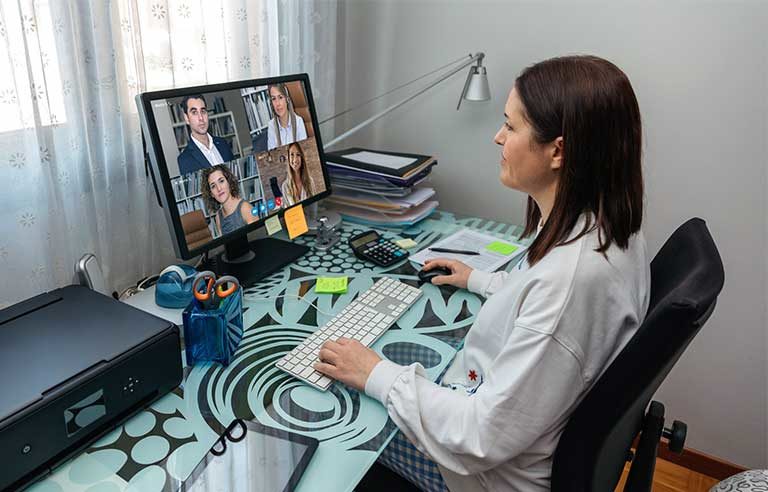How healthy is your home workstation? Researchers identify key ergo issues

Cincinnati — Millions of people working from home during the COVID-19 pandemic may be sitting at improperly arranged workstations that increase their risk of eye, head, neck, back, shoulder, wrist and forearm stress and strain injuries, according to the results of a recent survey conducted by University of Cincinnati researchers.
The researchers conducted an ergonomics assessment of 843 university faculty and staff members’ home workstations via an email survey. In addition, 41 employees submitted photos of their workstations for review. Identified as the top ergonomics issues concerning chairs were lack of lumbar support (73%), back support not being used (69%), seat was too hard (63%), and seat was too low or too high (43%).
Sitting in a chair that is the wrong height can result in elevated arms, leaning on the front edge of a desk and poor head position, the researchers noted. They added that back supports and softer seats help assist with proper posture, while not using armrests adds stress to the forearms and upper back.
Other ergonomics issues identified included poor lighting; work surfaces that had hard, sharp edges; and monitors positioned too high, too low or off to the side.
Among the biggest takeaways for Kermit Davis, lead study author and associate professor in the UC College of Medicine, is that those working at home should take a break about every 30 minutes to minimize the risk of injury.
“The body doesn’t like static postures continually,” Davis said in a July 28 press release. “You don’t want to do all sitting or all standing all the time. You want to alter your position and change it up throughout the day.”
Other recommendations:
- Place a pillow on your seat if you need more height.
- Use a rolled-up pillow or towel behind your back to provide lumbar/back support.
- Move your chair closer to the desk or table to ensure your back is against the back of the chair.
- Use books or a box to raise a laptop monitor to eye level.
- Standing workstations should include a monitor at eye level, keyboard placed so your forearms are parallel to the ground, and a soft or rounded front edge to the working surface.
The study was published online July 3 in the journal Ergonomics in Design.
Post a comment to this article
Safety+Health welcomes comments that promote respectful dialogue. Please stay on topic. Comments that contain personal attacks, profanity or abusive language – or those aggressively promoting products or services – will be removed. We reserve the right to determine which comments violate our comment policy. (Anonymous comments are welcome; merely skip the “name” field in the comment box. An email address is required but will not be included with your comment.)
